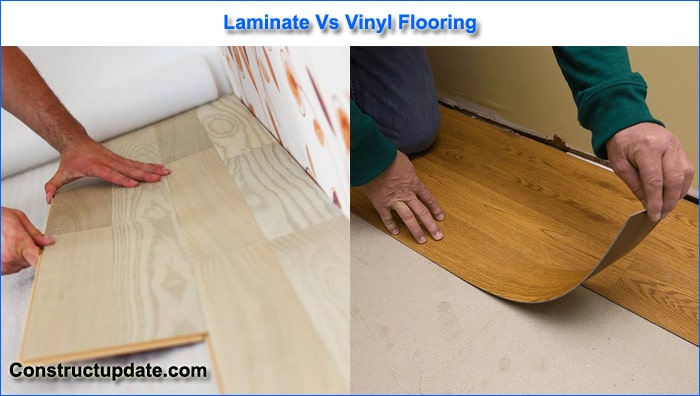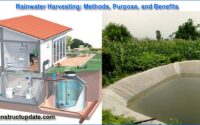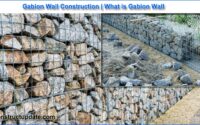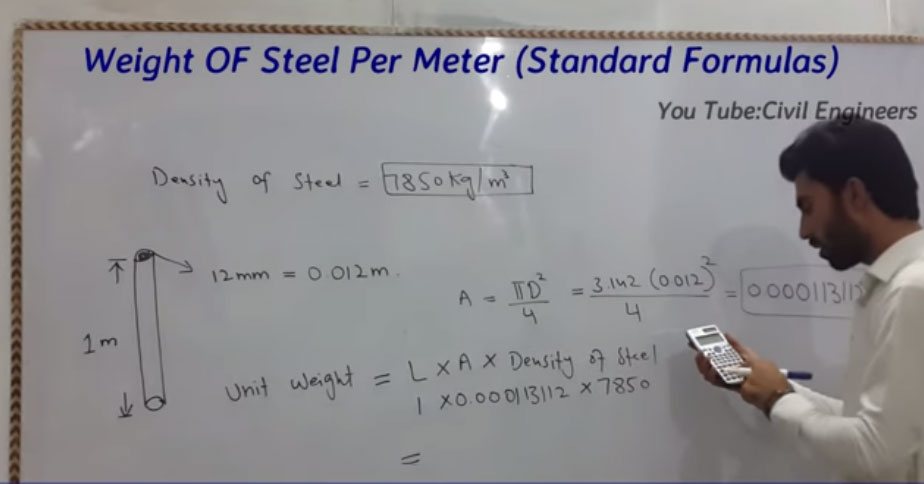Laminate Flooring Vs Vinyl Flooring | What is Laminate Flooring | What is Vinyl Flooring
Now, in the flooring construction industry, two types of flooring are the most popular: laminate flooring and vinyl flooring. However, these two types of flooring share certain comparable benefits, such as ease of installation, durability, and cost-effectiveness.
However, the applications of these two types of flooring are dependent on the demand and environment of the installation area; for example, if the customer wants variety in their flooring, laminate flooring is one of the best options; on the other hand, if the customer lives in a high-moisture area, vinyl flooring is one of the best options, and vinyl flooring is also very easy to clean. And, most importantly, these two types of flooring appear to be identical from a distance.
What is Laminate Flooring?
Laminate flooring is a synthetic (man-made) flooring that first became popular in the 1970s. Laminate, the first man-made replacement for genuine wood, grew in popularity as manufacturers devised more realistic looks that could readily pass for real hardwood.
Other types of flooring have caught on and have begun to release their own realistic wood looks, but more on that later. The laminate was kind of the pioneer for realistic wood-look flooring, and other types of flooring have caught on and have begun to release their own realistic wood looks, but more on that later. Laminate planks are comparable to genuine hardwood in that they are solid and have no give or movement.

Laminate flooring is typically comprised of 4 layers.*
*Can vary between manufacturers.
Backing layer: The backbone of your laminate plank is this.
Base layer: HDF or MDF core — HDF stands for high-density fiberboard, while MDF stands for medium density fiberboard, as you might expect. An HDF core is found in higher-quality products, so if you’re getting a great deal, check out that layer — it could be the reason! The moisture-resistant HDF core provides more alternatives and less hassle than typical hardwood. Water-resistant laminate floors may have more resins in their fiberboards, making them less prone to swelling in water.
Print layer: Most people will ooh and ahh over the print layer — it’s the design, the spectacle, the wow! Or, in other cases, it’s a deal-breaker… if it’s unattractive. Nobody has time for ugliness. The print layer simulates wood (or, increasingly, stone, metal, and other materials) and can include rougher, more natural-looking scrapes and knots, just like the real thing. That’s right, it’s a photo (a really cute, high-res photo) or the material being printed on your floor, and it’s startlingly realistic if I do so so myself.
Wear layer: Your laminate floor is protected by the wear layer. It’s why, despite the wear and tear of regular life, your laminate will still look wonderful in ten years.
Pros of Laminate Flooring
Durable: Because of its extreme durability, laminate flooring is an excellent choice for high-traffic areas or houses with children and pets.
Scratch resistance: Laminate features a thick wear layer that protects the floor from scratches, dents, wear, and stains, all of which our pets love to do.
Realistic wood and stone looks: Laminate floor planks can have the look and feel of a hand-scraped hardwood, embossed wood, distressed hardwood, or come in textured or smooth finishes to further approximate a genuine hardwood look. Unlike real hardwood, the quality of laminate flooring planks is consistent.
Can resist some water: The water resistance of laminate is improving thanks to advancements in construction. Most new laminate floors can take topical wetness, however, they aren’t as watertight as other wood-look options like vinyl flooring. Water will not seep through the boards if they are installed correctly.
Most hardwood flooring solutions do not have the ability to be put over radiant heating systems.
Cleaning and upkeep are simple: Whenever messes occur, simply mop or sweep them up. It is never essential to wax the floor.
Easy to install: Laminate flooring is intended to be laid as a floating floor, which means that it is not anchored to the ground underneath it and instead “floats” thanks to its interlocking pattern.
Easy to stand on for longer periods of time: The majority of laminate installs include underlayment, which can make the floor more comfortable to walk on.
Cost-effective: Laminate flooring is a less expensive alternative to hardwood flooring. When it comes to laminate vs. vinyl flooring, laminate comes out on top in terms of cost.
Cons of Laminate Flooring
Not as water-resistant as vinyl flooring: Laminate flooring has come a long way in terms of water resistance, but it still can’t handle standing pools of water. The water-resistance of laminate, unlike vinyl, works from top to bottom rather than bottom to top. Even if your subfloor has moisture concerns, you’ll need a vapor barrier.
It’s not a good idea to use it in full bathrooms or basements: You’ll want a more water-resistant floor in these locations because they’re prone to leaks and flooding. Installing an underlayment and vapor barrier, as well as using the glue-down installation method, will make your laminate floor more water-resistant.
Sound: Laminate floors can make a hollow, empty sound if fitted incorrectly. Every device comes with detailed installation instructions, and you can always contact a professional if you’re really worried. A good underlayment can also make a laminate floor quieter.
What is Vinyl Flooring?
In this laminate vs vinyl flooring battle, we’ll start with the home team. Vinyl flooring is similarly man-made and has the appearance of natural materials (wood, stone, and so on), but it’s an entirely separate beast with a wide range of options. For the sake of comparison, we’ll use wood-look vinyl planks, which are sometimes mistaken for laminate.
Vinyl had a terrible rep for a long time, but luxury vinyl planks that seem more lifelike than ever are gradually taking over the market. Vinyl flooring requires even less upkeep than laminate (in terms of moisture and cleaning) and, in my opinion, is the dark horse in the laminate vs vinyl flooring race.
Vinyl layers are quite similar to laminate layers, although they are made of different materials. Vinyl is typically made up of four layers*.
*Can vary between manufacturers.
Backing layer: Again, the backbone of your plank.
Solid vinyl core: The majority of the flooring is made of solid vinyl. This moisture-resistant, long-lasting core layer is made of high-density polymer.
Print vinyl layer: This is where you receive your beautiful photo imagery that makes the vinyl look (almost) identical to natural materials like stone and wood, similar to laminate. As technology advances, you’ll see more and more unique vinyl designs, such as leather, pebbles, chevron, and more! For a long time, vinyl was unable to produce anything that resembled laminate in terms of realism, beauty, or cost, but times are changing!
Wear layer: The wear layer, like the laminate, acts as a bodyguard, protecting your floor from dents, scratches, and other damage. The greater the wear layer, the better the buffer for your bodybuilder, right? Thicker wear layers provide more protection, so look at the thickness of the wear layer as well as the plank thickness when shopping for vinyl flooring.
Pros of Vinyl Flooring
Realistic wood and stone looks: Vinyl is undergoing a transformation. Rapidly. Top-of-the-line vinyl floors can now more accurately replicate natural materials than ever before. WPC vinyl is the top of the best, thus the appearances are usually quite convincing and attractive.
Easy, DIY installation: Most vinyl planks and tiles provide a simple interlocking or “floating” installation that most homeowners may complete without the assistance of a professional.
Realistic wood and stone looks: Laminate floor planks can have the look and feel of a hand-scraped hardwood, embossed wood, distressed hardwood, or come in textured or smooth finishes to further approximate a genuine hardwood look. Unlike real hardwood, the quality of laminate flooring planks is consistent.
Easy to maintain: Vinyl flooring is really simple to maintain. The majority of the alternatives are water-resistant, and many of them are completely waterproof. To avoid scrapes and scratches, make sure you use a thick wear layer.
Zero maintenance: To keep your WPC looking great, all you need is a vacuum and a damp mop every now and then.
Resilient: True, you could simply obtain a waterproof tile with a wood or stone appearance. Tile, on the other hand, is difficult. It’s not good for your joints or feet to stand on a tile floor all day. Vinyl is far more durable and pleasant.
Waterproof options: Yes, it is completely waterproof. They’re fantastic!
Cons of Vinyl Flooring
Doesn’t feel like real wood: Vinyl has a very distinct feel to it than real hardwood. Some homeowners place a premium on this sensation.
Price: This can cost more than other wood-look materials like laminate as you move up to weatherproof and premium versions. They do, however, come with a lot more bells and whistles!
Low-quality planks scratch and dent easily: You’ll need a high-quality plank with a strong wear layer if you want a vinyl plank that can withstand high traffic, family, and pets. The less expensive options will just not hold up.





